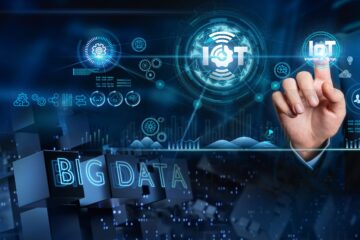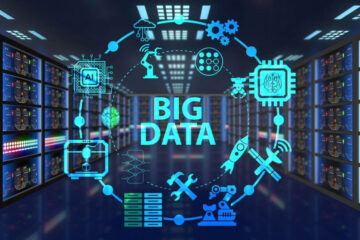In today’s fast-paced, interconnected world, data is being generated at an unprecedented rate. Every click, transaction, social media interaction, and sensor in the Internet of Things (IoT) generates data that can be harnessed for valuable insights. The challenge lies in managing and analyzing this vast amount of information—this is where big data comes in. Big data refers to the massive volumes of structured and unstructured data that organizations collect, store, and analyze to gain insights and make data-driven decisions. This article explores what big data is, its applications across industries, and the tools and technologies that are transforming how we work and live.
1. What is Big Data?
Big data refers to large and complex datasets that traditional data processing tools and techniques cannot handle effectively. It encompasses data from multiple sources, such as online transactions, customer feedback, social media interactions, sensors, and much more. The key characteristics of big data are often referred to as the 3 Vs:
- Volume: The sheer amount of data generated daily, ranging from terabytes to petabytes.
- Velocity: The speed at which data is created and needs to be processed in real time or near-real time.
- Variety: The diverse types of data, such as structured, semi-structured, and unstructured data (e.g., text, images, videos, and sensor data).
Additionally, some definitions also include the 4th V, Veracity (the trustworthiness of the data), and the 5th V, Value (the usefulness of the data).
2. Big Data Technologies: Tools and Techniques
To handle big data, businesses and organizations rely on various technologies that enable the collection, storage, and analysis of massive datasets. Some of the key tools and technologies in the big data ecosystem include:
Hadoop
Hadoop is an open-source framework that enables distributed storage and processing of large datasets across clusters of computers. It is designed to scale up from a single server to thousands of machines, making it highly efficient for big data applications.
Spark
Apache Spark is a powerful open-source analytics engine used for big data processing and machine learning. It is known for its speed, as it processes data in memory, making it faster than traditional Hadoop.
NoSQL Databases
NoSQL databases, such as MongoDB, Cassandra, and Couchbase, are designed to handle large volumes of unstructured or semi-structured data. These databases are ideal for big data applications where scalability and flexibility are crucial.
Cloud Computing
Cloud platforms like Amazon Web Services (AWS), Microsoft Azure, and Google Cloud provide scalable storage and computing resources to handle big data processing, enabling organizations to analyze data without the need for massive on-site infrastructure.
Data Warehousing
Data warehousing solutions, such as Snowflake and Google BigQuery, allow organizations to store large amounts of structured data and make it accessible for analysis, reporting, and decision-making.
Machine Learning & AI
Machine learning algorithms and artificial intelligence tools are integral to processing big data. These tools analyze large datasets, identify patterns, and make predictions, allowing organizations to make more informed decisions.
3. Big Data Applications Across Industries
Big data is transforming industries by providing new insights, improving operational efficiency, and enabling innovation. Here’s a look at how big data is making an impact across various sectors:
Big Data in Healthcare
In the healthcare industry, big data analytics is improving patient outcomes, enhancing research, and reducing costs. By analyzing patient data, medical records, and diagnostic information, healthcare providers can identify trends, predict diseases, and personalize treatment plans.
Examples of Big Data in Healthcare:
- Predictive Analytics: Forecasting patient needs and potential outbreaks of diseases.
- Personalized Medicine: Tailoring treatments based on genetic data and health histories.
- Real-Time Monitoring: Analyzing data from wearables and sensors to monitor patient vitals and conditions.
Big Data in Finance
The financial sector has embraced big data to enhance decision-making, identify fraud, and optimize investments. By analyzing customer transactions, financial reports, and market trends, banks and financial institutions can gain valuable insights and mitigate risks.
Examples of Big Data in Finance:
- Fraud Detection: Identifying fraudulent activities through transaction patterns and anomaly detection.
- Risk Management: Analyzing market data and customer behavior to assess financial risk.
- Customer Insights: Using big data analytics to create personalized financial products and services.
Big Data in Retail
Retailers use big data to enhance customer experiences, optimize inventory management, and improve marketing strategies. By analyzing customer behavior, sales data, and market trends, businesses can make smarter decisions and deliver personalized offerings.
Examples of Big Data in Retail:
- Customer Personalization: Offering tailored product recommendations based on browsing and purchasing history.
- Inventory Optimization: Predicting demand patterns and optimizing stock levels.
- Targeted Marketing: Using data to create personalized ad campaigns and promotions.
Big Data in Manufacturing
Manufacturers leverage big data to optimize production processes, reduce downtime, and improve supply chain management. Sensors and IoT devices embedded in machines generate real-time data that can be analyzed for maintenance, quality control, and efficiency improvements.
Examples of Big Data in Manufacturing:
- Predictive Maintenance: Forecasting equipment failures before they happen, reducing downtime.
- Supply Chain Optimization: Using data to streamline logistics and reduce costs.
- Quality Control: Monitoring production quality in real-time and identifying defects.
Big Data in Marketing
In marketing, big data helps companies understand consumer behavior, segment audiences, and create more targeted campaigns. With insights drawn from social media, online activity, and customer feedback, businesses can develop strategies that resonate with their customers.
Examples of Big Data in Marketing:
- Customer Segmentation: Identifying distinct customer groups based on purchasing behavior and demographics.
- Content Personalization: Tailoring advertisements and recommendations to individual preferences.
- Campaign Effectiveness: Analyzing the performance of marketing campaigns to optimize ROI.
4. The Challenges of Big Data
While the benefits of big data are clear, there are several challenges that organizations face when managing large volumes of data. These include:
Data Privacy and Security
With the increasing amount of data being collected, ensuring that data is secure and protected from breaches is a major concern. Organizations must adhere to regulations such as GDPR and CCPA to ensure compliance.
Data Integration
Big data often comes from multiple sources in different formats. Integrating these diverse data sets into a cohesive system for analysis can be difficult.
Skilled Workforce
Analyzing big data requires specialized knowledge in data science, machine learning, and analytics. Finding professionals with the right skills can be challenging.
Data Quality
Ensuring that the data is accurate, consistent, and reliable is critical. Poor-quality data can lead to incorrect insights and flawed decision-making.
5. The Future of Big Data
As technology continues to evolve, the potential of big data will expand even further. With the increasing use of AI, real-time analytics, and the Internet of Things (IoT), organizations will be able to process data faster and gain deeper insights than ever before. The integration of cloud computing and edge computing will further enable organizations to scale their data operations and improve decision-making.
Conclusion
Big data is more than just a buzzword; it is a driving force behind innovation, efficiency, and growth across industries. By leveraging advanced technologies and analytics tools, businesses can unlock valuable insights that enhance decision-making and give them a competitive edge. While there are challenges to address, the future of big data looks promising, with new opportunities emerging every day. Whether you’re in healthcare, finance, retail, or manufacturing, big data has the potential to transform your industry and shape a smarter future.



0 Comments